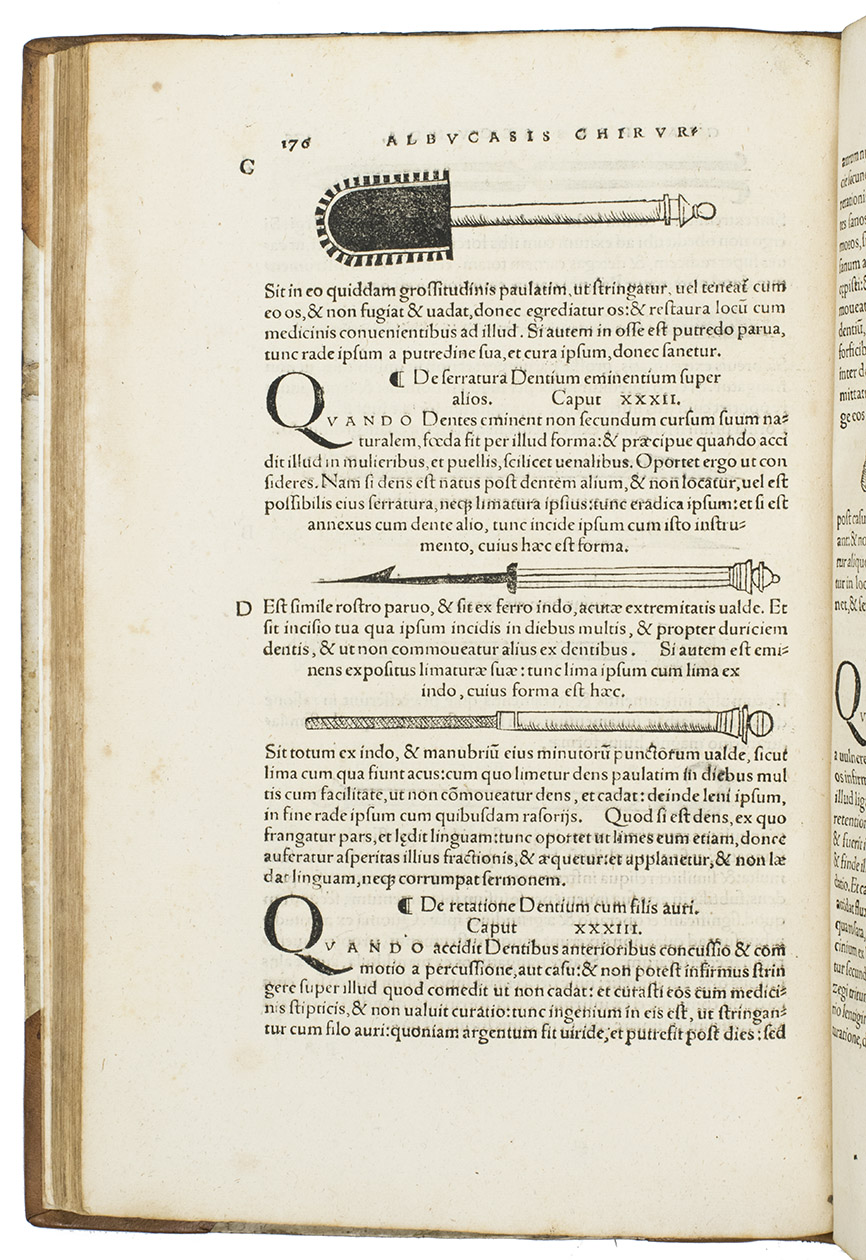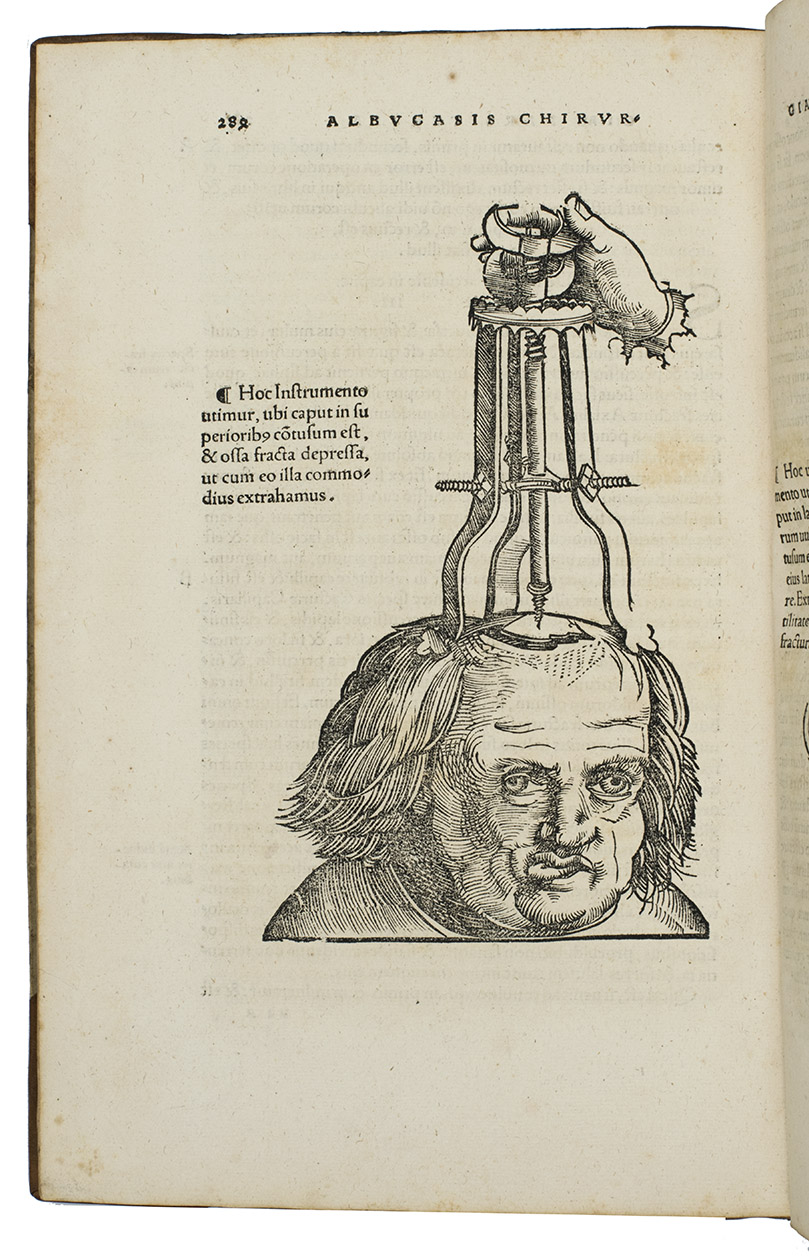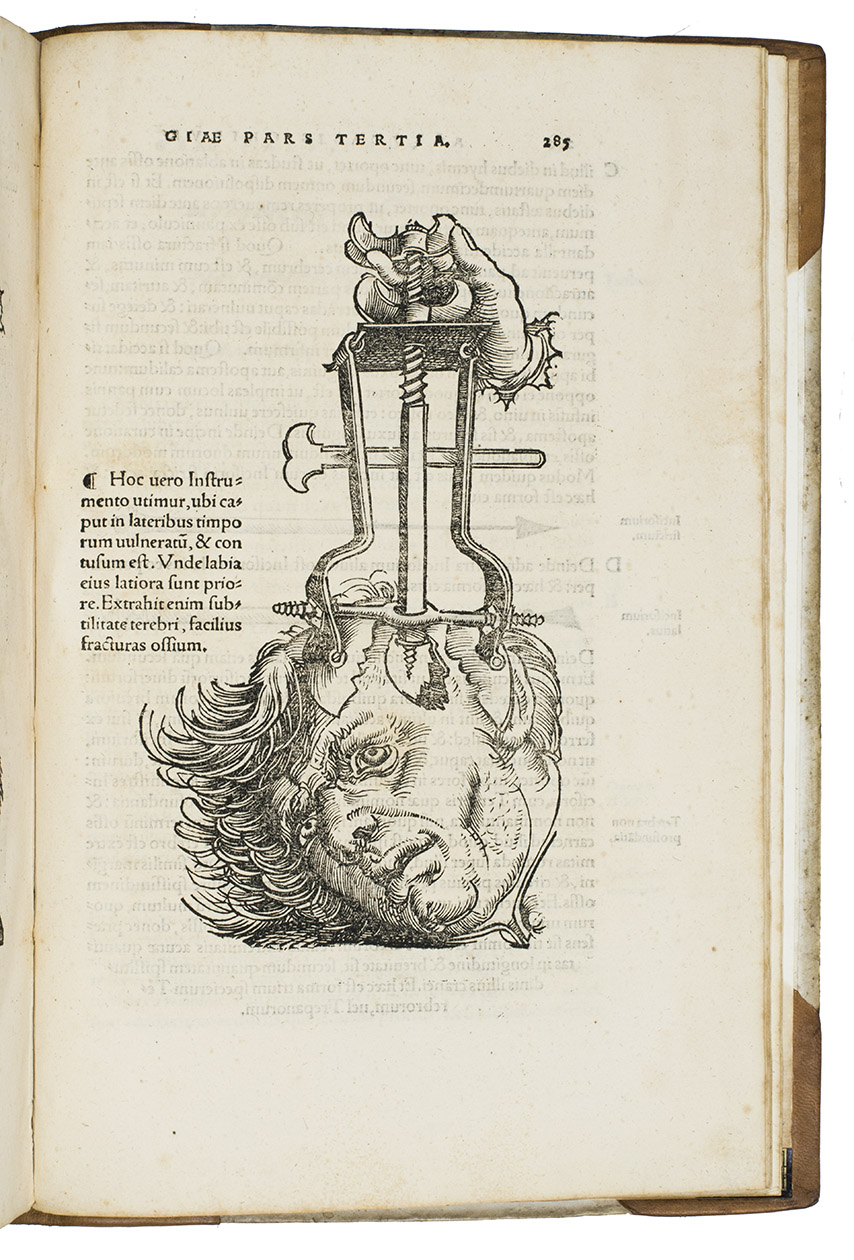ABULCASIS (Abu al-Quasim Khalaf Ibn Al-Abbas).
Chirurgicorum omniu[m] primarii, lib. tres.
I. De cauterio cum igne & medicinis acutis per
singula corporis humani membra ...
II. De sectione & perforatione, phlebotomia, & ventosis ...
III. De restauratione & curatione dislocationis me[m]brorum ...
Preceded by: [THEODORUS PRISCIANUS] (mis-attributed to "Octavius HORATIANUS"). Rerum medicarum lib. quatuor ... Per Herma[n]num Comitem a Neüenar, nuper restitutus autor.
Strasbourg, Johannes Schott, 1532 (colophon: 26 February). 2 works in 1 edition. Folio in 6s (32.5 x 21 cm). With a 5-piece woodcut frame on the title page (each side piece with 2 roundels containing a portrait and coat-of-arms), 8 full-page woodcuts by Hans Wechtlin (ca. 1480-post 1526) and numerous woodcuts in the text. Set in Venetian-style roman types, with 14 mm typographic Roman capitals (probably by Peter Schoeffer the younger) used as initials. Later half sheepskin, with the title in ink on the foot edge. [8], 319, [1 blank] pp.
€ 65,000
Third edition (all published in Latin translation, the first in 1497) of three books of surgery by the Arabic physician Abu al-Quasim (ca. 936-1009/13 CE in Andalusia), known in the West as Abulcasis and here erroneously "Albucasis". The text is taken from parts of his principal work, the surgical handbook al-Tasrif. Topics covered by the three books include cauterization (book 1), making incisions and blood-letting (book 2) and fractures and dislocated limbs (book 3). A fourth edition appeared under the title Methodus medendi in 1541.
Abu al-Quasim became personal physician to Hakam II, Calif of Western Califate centred on Cordova. His handbook was translated into Latin in the 12th century by Gerard of Cremona in Toledo and helped bring Arabic surgical knowledge to Europe, where surgery had been separated from academic medical training. opening with a full-page woodcut of a man with about thirty different kinds of injuries (and shown with the weapons and other instruments that caused the injuries still in place, cutting, stabbing and otherwise injuring him)
The present edition combines two independent medical works, but although Abu al-Quasims manual (k4r-dd6v, pp. 117-319), is almost twice as extensive and more important in the history of medicine - so that we present it first - it actually follows the shorter work, the first edition of the four books of the Rerum medicarum by the Greek physician at Constantinople (Istanbul), Theodorus Priscianus (a1r-k3v, pp. 1-112). The four books cover external ailments, internal ailments, womens ailments and physiology. An 8vo edition appeared at Basel in the same year, but it omits the entire fourth book and parts of the first two. It went through several further editions.
Contemporary inscription in ink on last blank page. A few tiny holes in the first 2 pages. First 4 pages browned. Minor foxing to the title-page. Paper slightly browned overall. Some stains in the margins throughout. Otherwise in very good condition. Adams P2119; Benzing, Straßburg I, 1514; Choulant, Handb. 217; Durling 3764; Hirsch-H. IV, 677; Parkinson 1965; Schmidt, Schott 123; Stillwell, Awakening III, 532; USTC 679112; VD 16, T 840; Waller 7646; Wellcome I, 5256; for Albucasis: www.mmbm.ch/abulcasis-en.html.
Related Subjects:











